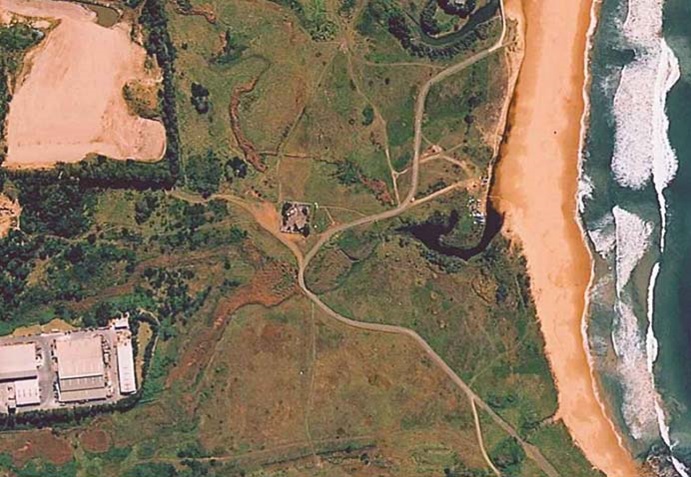Woodlands Creek is located on the south coast of New South Wales. It is classed as a small creek which meets the sea at the township of Thirroul, north of Wollongong. It has an intermittently closed entrance.
This estuary is formed at the confluence of 3 creeks: Woodlands, Hewitts and Tramway creeks, which drain via the same entrance when it is open to the sea.
Water quality
As part of our water quality monitoring program we assess the water quality and ecosystem health of an estuary using a range of relevant indicators.
Go to estuary report cards to find out what each grade means, read our sampling, data analysis and reporting protocols, and find out how we calculate these grades.
Physical characteristics
| Estuary type | Creek |
|---|---|
| Latitude | –34.33 (ºS) |
| Longitude | 150.92 (ºE) |
| Catchment area | 2 km2 |
| Estuary area | 0.003 km2 |
| Estuary volume | 0.4 ML |
| Average depth | 0.1 m |
Notes: km2 = square kilometres; m = metres; ML = megalitres.
Water depth and survey data
Bathymetric and coastal topography data for this estuary are available in our data portal.
Land use
The catchment of Woodlands Creek is moderately disturbed due to urbanisation of half the catchment. The other half the catchment is forested and forms part of the Illawarra Escarpment State Conservation Area.
National and marine parks
- Illawarra Escarpment State Conservation Area is the largest conservation area within this catchment.
- This estuary does not flow into a marine park.
Community involvement
- Landcare Illawarra support volunteer groups working to improve the environment in this region.
- There are over 60 bushcare groups in the Wollongong area. Bushcare volunteers help regenerate and care for local bushland.

Aerial view of Woodlands Creek
Local government management
Local councils manage estuaries within their area unless the estuary is attached to a marine park. Wollongong City Council manage this estuary.
Information about how the council manages its estuaries can be found on their Creeks and lagoons webpage.
Threatened species
Estuaries provide important breeding, nursery and feeding grounds for many animals, such as fish and birds.
Read more about the biodiversity in our estuaries.